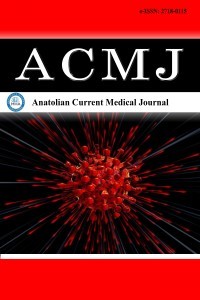1.
Liva GA, Karatzanis AD, Prokopakis EP. Review of rhinitis: classification, types, pathophysiology. J Clin Med. 2021;10(14):3183. doi: 10.3390/jcm10143183
2.
Papadopoulos NG, Guibas GV. Rhinitis subtypes, endotypes, and definitions. Immunol Allergy Clin North Am. 2016;36(2):215-233. doi:10. 1016/j.iac.2015.12.001
3.
Özdemir Ö, Elmas B. New Developments in the diagnosis and therapy of allergic rhinitis. Asthma Allergy Immunol. 2022;15(1):001-016. doi:10. 21911/aai.5033
4.
Reyes-Angel J, Kaviany P, Rastogi D, Forno E. Obesity-related asthma in children and adolescents. Lancet Child Adolesc Health. 2022;6(10):713-724. doi:10.1016/S2352-4642(22)00185-7
5.
Permaul P, Kanchongkittiphon W, Phipatanakul W. Childhood asthma and obesity—what is the true link? Ann Allergy Asthma Immunol. 2014; 113(3):244-246. doi:10.1016/j.anai.2014.07.001
6.
Vatankhah V, Khazraei H, Iranpoor H, Lotfizadeh M. Impact of high body-mass index on allergic rhinitis patients. Revue Française d'Allergologie. 2017;57(5):370-374. doi:10.1016/j.reval.2017.05.001
7.
Han Y-Y, Forno E, Gogna M, Celedón JC. Obesity and rhinitis in a nationwide study of children and adults in the United States. J Allergy Clin Immunol. 2016;137(5):1460-1465. doi:10.1016/j.jaci.2015.12.1307
8.
Fantuzzi G. Adipose tissue, adipokines, and inflammation. J Allergy Clin Immunol. 2005;115(5):911-920. doi:10.1016/j.jaci.2005.02.023
9.
Ciprandi G, Caimmi D, Raschetti R, et al. Adipokines and their role in allergies. Int J Immunopathol Pharmacol. 2011;24(4 Suppl):13-16. doi:10. 1177/03946320110240S403
10.
Hersoug LG, Linneberg A. The link between the epidemics of obesity and allergic diseases: does obesity induce decreased immune tolerance? Allergy. 2007;62(10):1205-1213. doi:10.1111/j.1398-9995.2007.01506.x
11.
Zmora N, Bashiardes S, Levy M, Elinav E. The role of the immune system in metabolic health and disease. Cell Metab. 2017;25(3):506-521. doi:10.1016/j.cmet.2017.02.006
12.
Hellings PW, Klimek L, Cingi C, et al. Non-allergic rhinitis: position paper of the European Academy of allergy and clinical immunology. Allergy. 2017;72(11):1657-1665. doi:10.1111/all.13200
13.
Bousquet J, Van Cauwenberge P, Khaltaev N. Allergic rhinitis and its impact on asthma. J Allergy Clin Immunol. 2001;108(5 Suppl):S147-S334. doi:10.1067/mai.2001.118891
14.
Cavkaytar O, Buyuktiryaki B, Sag E, Soyer O, Sekerel BE. What we miss if standard panel is used for skin prick testing? Asian Pac J Allergy Immunol. 2015;33(3):211-221. doi:10.12932/AP0564.33.3.2015
15.
Şahiner UM, Civelek E, Yavuz ST, Büyüktiryaki AB, Tuncer A, Şekerel BE. Skin prick testing to aeroallergen extracts: what is the optimal panel in children and adolescents in Turkey? Int Arch Allergy Immunol. 2012; 157(4):391-398. doi:10.1159/000329870
16.
AnthroPlus WHO (World Health Organization) for personal computers. 2009. mamaproject.org
17.
Settipane RA. Demographics and epidemiology of allergic and nonallergic rhinitis.Allergy Asthma Proc. 2001;22(4):185-189.
18.
Greiner AN, Hellings PW, Rotiroti G, Scadding GK. Allergic rhinitis. Lancet. 2011;378(9809):2112-2122. doi:10.1016/S0140-6736(11)60130-X
19.
Kaliner MA. Nonallergic rhinopathy (formerly known as vasomotor rhinitis). Immunol Allergy Clin North Am. 2011;31(3):441-455. doi:10. 1016/j.iac.2011.05.007
20.
Matheson MC, Dharmage SC, Abramson MJ, et al. Early-life risk factors and incidence of rhinitis: results from the European Community Respiratory Health Study—an international population-based cohort study. J Allergy Clin Immunol. 2011;128(4):816-823.e5. doi:10.1016/j.jaci. 2011.05.039
21.
Saulyte J, Regueira C, Montes-Martínez A, Khudyakov P, Takkouche B. Active or passive exposure to tobacco smoking and allergic rhinitis, allergic dermatitis, and food allergy in adults and children: a systematic review and meta-analysis. PLoS Med. 2014;11(3):e1001611. doi:10.1371/journal.pmed.1001611
22.
Guerra S, Sherrill DL, Martinez FD, Barbee RA. Rhinitis as an independent risk factor for adult-onset asthma. Allergy Clin Immunol. 2002;109(3):419-425. doi:10.1067/mai.2002.121701
23.
Shaaban R, Zureik M, Soussan D, et al. Rhinitis and onset of asthma: a longitudinal population-based study. Lancet. 2008;372(9643):1049-1057. doi:10.1016/S0140-6736(08)61446-4
24.
Eriksson J, Bjerg A, Lötvall J, et al. Rhinitis phenotypes correlate with different symptom presentation and risk factor patterns of asthma. Respir Med. 2011;105(11):1611-1621. doi:10.1016/j.rmed.2011.06.004
25.
Bedolla-Barajas M, Kestler-Gramajo A, Alcalá-Padilla G, Morales-Romero J. Prevalence of oral allergy syndrome in children with allergic diseases. Allergol Immunopathol (Madr). 2017;45(2):127-133. doi:10. 1016/j.aller.2016.04.017
26.
Vichyanond P, Suratannon C, Lertbunnaphong P, Jirapongsananuruk O, Visitsunthorn N. Clinical characteristics of children with non-allergic rhinitis vs with allergic rhinitis. Asian Pac J Allergy Immunol. 2010;28(4):270-274.
27.
Evcimik MF, Dogru M, Cirik AA, Nepesov MI. Adenoid hypertrophy in children with allergic disease and influential factors. Int J Pediatr Otorhinolaryngol. 2015;79(5):694-697. doi:10.1016/j.ijporl.2015.02.017
28.
Westman M, Stjärne P, Asarnoj A, et al. Natural course and comorbidities of allergic and nonallergic rhinitis in children. J Allergy Clin Immunol. 2012;129(2):403-408. doi:10.1016/j.jaci.2011.09.036
29.
Schuler IV CF, Montejo JM. Allergic rhinitis in children and adolescents. Immunol Allergy Clin North Am. 2021;41(4):613-625. doi:10.1016/j.iac. 2021.07.010
30.
Li AR, Zhang K, Reddy PD, et al. Systematic review of measures of disease severity in rhinitis.Int Forum Allergy Rhinol. 2021;11(9):1367-1377. doi:10.1002/alr.22794
31.
Saadeh D, Salameh P, Caillaud D, et al. High body-mass index and allergies in schoolchildren: the French six cities study. BMJ Open Respir Res. 2014;1(1):e000054. doi:10.1136/bmjresp-2014-000054
32.
Han MW, Kim SH, Oh I, Kim YH, Lee J. Obesity can contribute to severe persistent allergic rhinitis in children through leptin and interleukin-1β. Int Arch Allergy Immunol. 2021;182(6):546-552. doi:10.1159/000512920
33.
Zhou J, Luo F, Han Y, Lou H, Tang X, Zhang L. Obesity/overweight and risk of allergic rhinitis: a meta-analysis of observational studies. Allergy. 2020;75(5):1272-1275. doi:10.1111/all.14143
34.
Hsueh KC, Lin YJ, Lin HC, Lin CY. Serum leptin and adiponectin levels correlate with severity of allergic rhinitis. Pediatr Allergy Immunol. 2010;21(1 Pt 2):e155-e159. doi:10.1111/j.1399-3038.2009.00878.x
35.
Sybilski AJ, Raciborski F, Lipiec A, et al. Obesity-a risk factor for asthma, but not for atopic dermatitis, allergic rhinitis and sensitization. Public Health Nutr. 2015;18(3):530-536. doi:10.1017/S1368980014000676
36.
Kusunoki T, Morimoto T, Nishikomori R, et al. Obesity and the prevalence of allergic diseases in schoolchildren. Pediatr Allergy Immunol. 2008;19(6):527-534. doi:10.1111/j.1399-3038.2007.00686.x
37.
Yao TC, Ou LS, Yeh KW, et al. Associations of age, gender, and BMI with prevalence of allergic diseases in children: PATCH study.J Asthma. 2011;48(5):503-510. doi:10.3109/02770903.2011.576743

